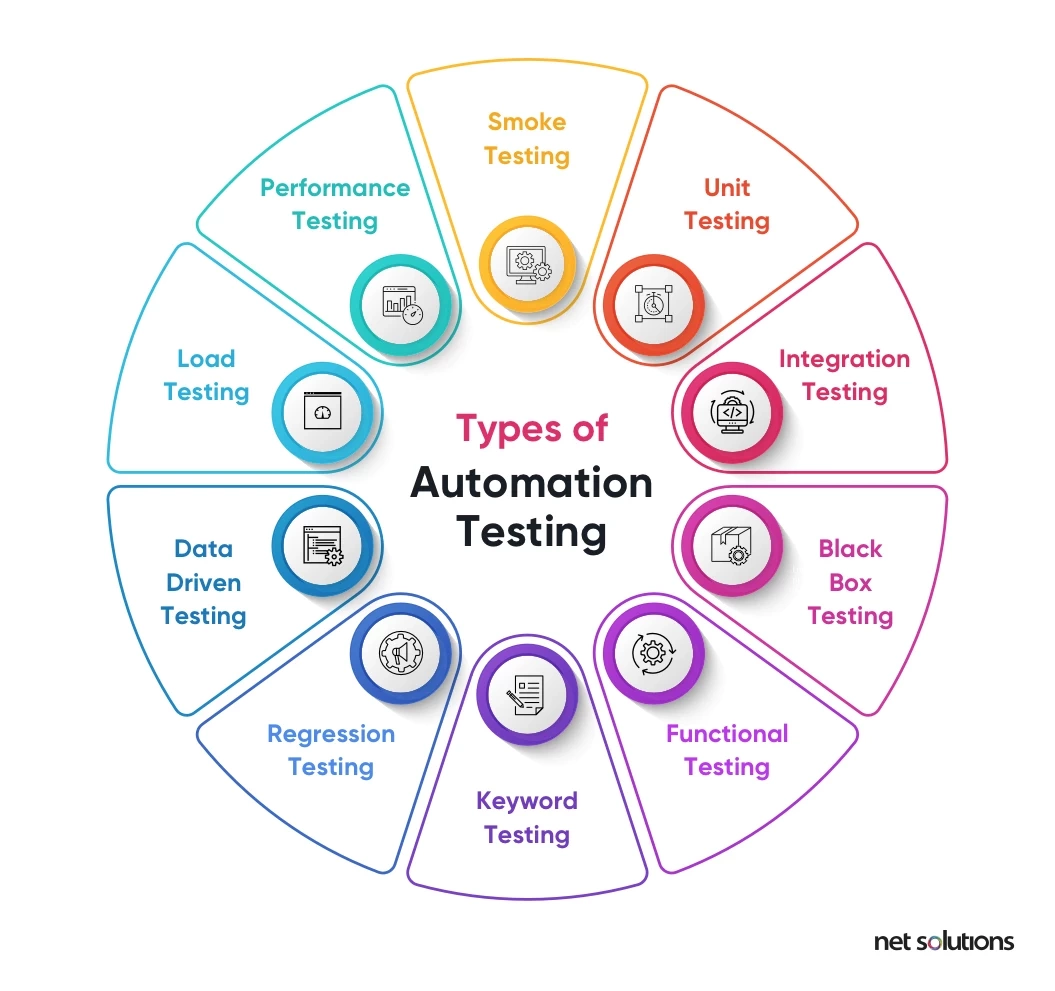Automation Testing: Trick Steps to Simplify Development Lifecycles
Automation Testing: Trick Steps to Simplify Development Lifecycles
Blog Article
The Future of Software Application Development: Taking Advantage Of the Potential of Automation Checking for Faster, Much More Reputable Releases
In the realm of software application growth, the quest for quicker, a lot more reputable launches has long been a main focus. As modern technology advances and customer expectations advance, the role of automation testing in achieving these objectives has ended up being increasingly prominent - automation testing. The potential benefits of automation testing are vast, encouraging not only to quicken release cycles yet likewise to improve the general high quality and consistency of software. In a landscape where rate and precision are vital, taking advantage of the abilities of automation testing stands as a vital technique for remaining in advance.
The Power of Automation Testing
In the realm of software program growth, the execution of automation testing has shown to substantially improve efficiency and quality control procedures. By automating repetitive and time-consuming manual screening jobs, software application groups can enhance their screening efforts, reduce human errors, and accelerate the overall development lifecycle. Automation testing enables the fast implementation of examination instances throughout various atmospheres and arrangements, giving designers with fast feedback on the high quality of their code adjustments.
One of the essential advantages of automation testing is its capacity to boost examination coverage, making sure that more functions and functionalities are extensively tested. This extensive screening approach helps recognize issues early in the growth cycle, lowering the chance of expensive bugs getting to production. Automation screening advertises continuous combination and continuous delivery methods, allowing groups to launch software updates much more often and dependably.
Accelerating Launch Cycles
The acceleration of release cycles in software program advancement is important for staying affordable in the quickly developing technology landscape. Reducing the time between launches allows firms to react quickly to market needs, integrate user feedback promptly, and surpass competitors in delivering innovative functions. By adopting dexterous methodologies and leveraging automation testing devices, development groups can streamline their processes, identify bugs earlier, and make certain a greater high quality item with each release.
Accelerating release cycles likewise makes it possible for software application companies to preserve a competitive side by swiftly resolving safety vulnerabilities and adjusting to transforming governing requirements. Additionally, regular releases help in building client depend on and loyalty as users take advantage of constant enhancements and pest fixes. This iterative technique promotes a culture of continual enhancement within growth groups, urging partnership, innovation, and an emphasis on delivering value to end-users.
Making Sure Constant Quality Control
Amid the increased release cycles in software program advancement, preserving consistent quality assurance becomes critical for guaranteeing that each version satisfies the highest possible standards of capability and integrity. Constant quality assurance involves a methodical approach to screening and examining software to determine and fix any kind of problems or defects without delay. To achieve this, software program development teams should establish robust QA procedures that are incorporated throughout the growth lifecycle. This consists of specifying clear high quality requirements, conducting extensive screening at each phase of development, and leveraging automation testing tools to streamline the procedure.
Overcoming Common Testing Difficulties
Attending to and solving typical screening challenges is vital for ensuring the efficiency and performance of software application development processes. One widespread difficulty is the lack of comprehensive test protection, where testers might forget certain scenarios, resulting in prospective insects sliding into the end product. This problem can be mitigated by detailed test preparation, including varied screening methods, and leveraging automation screening to enhance protection. Another usual difficulty is the upkeep of test scripts, especially in agile atmospheres where frequent adjustments occur. Test manuscript upkeep can be streamlined by making use of durable examination automation frameworks that offer very easy script adjustments and updates. Furthermore, coordinating screening initiatives throughout various groups and departments can pose a challenge because of interaction spaces and differing top priorities (automation testing). Executing clear interaction networks, developing standard procedures, and cultivating cooperation with devices like problem trackers and task management systems can help overcome this difficulty and ensure seamless screening coordination. By proactively dealing with these difficulties, software program development teams can boost the high quality and integrity of their releases.
Implementing Automation Testing Strategies

Once the examination instances are chosen, teams ought to spend time in creating robust examination scripts that are maintainable, reusable, and scalable. Partnership in between stakeholders, developers, and testers is vital to make sure that the automation screening straightens with the overall job goals advice and needs. Continuous integration and implementation pipes can additionally enhance the automation screening process by automatically setting off examinations whenever new code is devoted. By taking on automation testing methods, software advancement teams can accomplish quicker testing cycles, greater examination insurance coverage, and eventually provide even more dependable software releases.
Conclusion
In conclusion, automation screening offers an effective tool for increasing launch cycles, making sure constant quality guarantee, and conquering typical screening difficulties in software application development. By using the potential of automation testing methods, companies can achieve quicker and more trusted launches. automation testing. Welcoming automation testing is necessary for staying affordable in the hectic globe of software advancement

In conclusion, automation screening offers an effective tool for accelerating release cycles, ensuring regular high quality websites assurance, and overcoming typical screening difficulties in software program growth.
Report this page